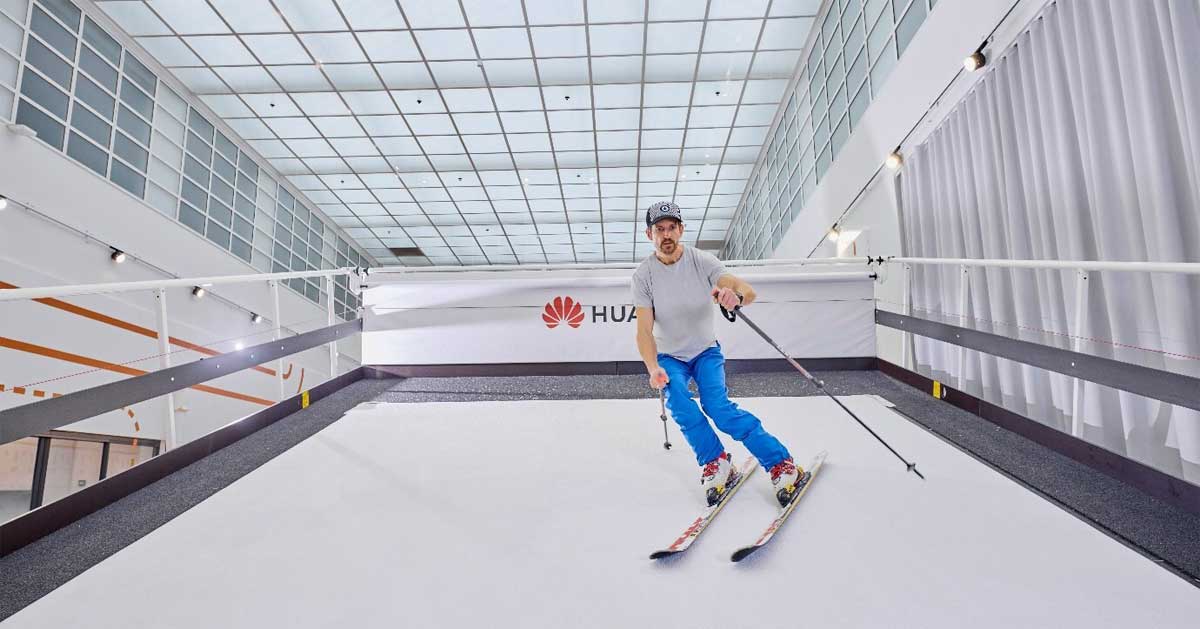

31 October 2023
 The ski simulator is one of the life-like sports environments in Huawei's new 1,000-square-meter health lab in Finland, where the Chinese company tracks more than 200 physiological and biomechanical indicators to improve algorithms focused on health monitoring. This lab serves as a platform for health and fitness research using Huawei's wearable devices in real-life applications, while also contributing to technology research. In the press release, Huawei reports that it is covering more than 20 sports in 5 major testing areas. Skiing was chosen because it is one of the most popular sports in Europe. The ski simulator is equipped with adjustable speed, incline, and interactive routes. The 'slope' environment has sensors that can track the skier's performance data, such as speed or craving angles. Other sports are cycling, swimming - for which a counter-current pool has been built in - and cardiovascular training, which takes place in the lab's open gym area. During the sports and physiological tests, the participants are monitored using Huawei's latest wearable devices. The lab is staffed by a multidisciplinary scientific team - 20 experts from 5 major fields of physiology, AI, machine learning, software testing and software engineering from 7 EU countries are mentioned - with the aim of exploring advanced standards in sports and health research. Huawei explicitly points out that the research participants' data are protected by strict privacy and security principles throughout the research process. The lab in Finland is the third after two already established in China. For Huawei, the health lab is a further step in combining scientific research and product development with a focus on sports and health. Huawei already collaborates with European health institutions and research groups, participating in initiatives such as iCARE4CVD, which focuses on artificial intelligence and cardiovascular disease research. Huawei is also part of the Interlive consortium with European universities to develop best practices for wearable devices. |